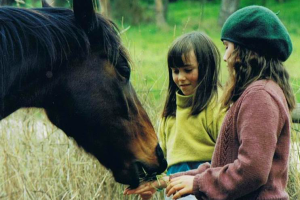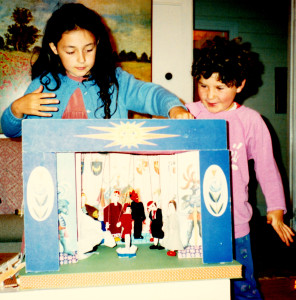Ten Years
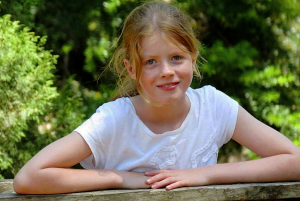 Background: The Gesell Institute of Child Development has observed that children go through a repeating sequence of six different stages with predictable changes in mood and behaviour in each. Ten Years includes just one stage. The behaviour observed in these stages reflects the qualities associated in tradition with the planets—in the case of Ten with Moon.
Background: The Gesell Institute of Child Development has observed that children go through a repeating sequence of six different stages with predictable changes in mood and behaviour in each. Ten Years includes just one stage. The behaviour observed in these stages reflects the qualities associated in tradition with the planets—in the case of Ten with Moon.
The developmental traits in these profiles represent only one aspect of children’s behaviour and may be masked, modified or intensified by other factors, both individual and environmental, such as temperament, gender related behaviours, high stress levels, over-stimulation, too much screen time or organic problems.
Note: If your child has turned this age but shows none of these behaviours, please read the previous age level, or just wait a few months, then read this again!
These profiles integrate the wonderful descriptions from the Gesell Institute of Child Development research and the ideas of Rudolf Steiner into my own research. Direct quotations from Gesell are in ‘single quote marks’ or indented.
View/download as pdf Ten
Ten
A stage with Moon qualities
The age of Ten is at the centre of childhood. It comes after the completion at Nine of four Gesell cycles of growth. Nine was a relatively serious, thoughtful, sensitive, responsible and loyal age, with qualities of a Saturn stage. Now a new Gesell cycle starts in Ten, and reflects different qualities, this time more associated with youthfulness, innocence and wholesome-ness; now they show goodness rather than wisdom, and breadth rather than depth. Tens are also more open, can be more intuitive, impressionable, receptive, adaptable and able to live in the present. These are all qualities associated with the Moon. Once again the planetary qualities add a helpful perspective to what we see in development.
Gesell researchers give us this wonderful description of Ten:
There’s nobody nicer than a ten-year-old….he loves life and shares it enthusiastically with those near and dear. The outstanding thing about the typical ten-year-old is a certain goodness, a smoothness, a friendliness, an acceptance of things as they are. He loves and admires his parents; enjoys friends; even accepts self as a comfortable person to be with. … The typical ten-year-old is at heart a very positive person—friendly, secure, outgoing, accepting, trusting of others…For this year, at least, things for most boys and girls have reached a wonderfully enjoyable state of equilibrium.
Physical growth
The emphasis in physical growth at Ten is now well established in the chest, circulation and respiratory system, in heart and lungs. Physically Tens are well coordinated and graceful. They show all the signs of healthy growth and strong life forces associated with the Moon—good appetite, good sleep, with fewer nightmares, more robust health and immune responses, joy and love of life. Even their facial gestures suggest rounded, abundant growth in their ‘tendency to pout or extend lips’ (compared to drawing in of lips at Nine). They take sheer delight in physical activity; their stamina is higher, but they also like quieter activity, like just ‘fooling around’. There is a wholesomeness and good heartedness in Ten.
Physically, developmental differences between the genders and within the same gender are becoming greater as some of the girls are showing the hormonal changes of puberty in the beginnings of breast development, with swelling behind the nipples. The time of the onset of puberty can be affected by many factors including genes, race, obesity, home environment, stress, food, even climate. After breast development begins, changes come on slowly; it can be two years between when the breast tissue in girls starts to change and actual first menstruation. Similarly with boys, though their hormonal changes begin up to a year later than in girls.
There is some concern that factors like obesity and hormone-like substances in the environment are triggering the onset of puberty considerably earlier in some girls, even as early as six (African American) or seven (Caucasian American) according to one study, way ahead of the girls‘ emotional readiness for “puberty”. It is important that parents do not let this premature development guide their parenting, but follow the development of their children as a whole, including their emotional, intellectual and moral development in providing appropriate guidance for these children.
For more information on sex, sexuality and talking to your child see Sex and your teenager
Sense of self
 Tens are straight forward and uncomplicated in their sense of self, with many Moon qualities. They are generally contented with themselves and life as it presents itself with a free and easy give and take. They do not want to delve too deep, or ask too many questions or to go out of bounds on big adventures. In social relations they want peace, not trouble or challenges. They want life to be simpler and easier for themselves and for others.
Tens are straight forward and uncomplicated in their sense of self, with many Moon qualities. They are generally contented with themselves and life as it presents itself with a free and easy give and take. They do not want to delve too deep, or ask too many questions or to go out of bounds on big adventures. In social relations they want peace, not trouble or challenges. They want life to be simpler and easier for themselves and for others.
Tens create a sunny calm to rest in for a while, where they can be happier, more secure, more poised, with considerable self-possession. They are less critical and are more accepting and trusting of others and consequently able to be more open, frank, sincere, positive and relaxed themselves. In many ways they are more innocent and unselfconscious.
Gesell suggests that, given favourable life circumstances, Ten can be a time when children can be gloriously content, well balanced and comfortable, both with themselves and those around them.
Their vulnerabilities lie in their relation to others, whether they can find a place for themselves in the social group, and whether they can be sufficiently independent within the group to be true to themselves. They do not have the fierce inner striving for independence and freedom, which we see in the Saturn qualities of Nine, and Mercury qualities of Eleven.
Emotional development
As we have seen, in general life is good for Tens; their free expressiveness shows in bursts of happiness and demonstrative affection. When things go wrong however, they may be given to sharp bursts of anger, and may strike out with primitive childish violence, although these reactions are brief, explosive and shallow. Gesell researchers describe this: ‘He explodes in unmistakable rage; is quick to strike out, kick or even bite. If more controlled he boils over verbally, may cry, or go to his room in a furore of name calling and foot stamping.’ These short lived, but strongly expressed emotions, have something of a primal impulse in them, similar to what we may see in a Moon type. For a person with strong Moon qualities can be a little less conscious and find such impulsive behaviours hard to control. Nevertheless, perhaps this ability to give expression to their negative feelings also when needed in Tens helps to safeguard their self-contentment, casualness and companionability.
Tens’ caring nature, another Moon quality, also means they are drawn to nurture and protect others where they can. Gesell found that Tens, both boys and girls, when thinking about a career, were drawn to professions where they could help people or animals.
There is something of a Moon quality too in the youthfulness and innocence of this age which seems to protect them against deep suffering. Gesell comments: ’Though aware of his heart, he is not yet ready to delve into its depths.’ Not surprisingly, their fears and worries are less and they do not cry as much. While their feelings may get hurt, they are not hurt as deeply as they may have been at some other ages, like Nine.
Sociability and priority for relationships
 Their generous sociability is the gift of this age. They are motivated most by their inner need for love, relationship and belonging. It is not surprising then to find Tens can be very friendly, outgoing, companionable and witty. They are very interested in groups, in social relationships and in building connections with those around them. They are home loving and family loving (another Moon quality), but most of all they love being with their friends.
Their generous sociability is the gift of this age. They are motivated most by their inner need for love, relationship and belonging. It is not surprising then to find Tens can be very friendly, outgoing, companionable and witty. They are very interested in groups, in social relationships and in building connections with those around them. They are home loving and family loving (another Moon quality), but most of all they love being with their friends.
It is clear from Tens’ behaviour that they have a clear priority for love, relationships and harmony, not power or freedom, as in some other stages. What is distinctive about Tens’ sociability and interaction with their peers is that Tens generally want to avoid confrontation and conflict. Elevens’ sociability shows a great contrast to Tens’ because Elevens enjoy a little argumentativeness and are less disconcerted by the lack of harmony this might cause. Tens’ priority for conflict avoidance makes them more amenable, diplomatic, sympathetic and kind.
Tens clearly do not want to hurt the feelings of others and find the best way to avoid this, is to avoid any situation where it is likely to happen in the first place—to avoid the need for disagreements, refusals, and so on, even by absenting themselves if need be. We see this pragmatic avoidance in their diplomatic manoeuvres and also in truth telling, where they may hold back on giving the facts, rather than lie outright. Gesell describes this: ’Tens ‘can be quite diplomatic.’’[He] tries not to exclude others who he knows would wish to join.’ He would rather casually just ‘not tell them about [it].’ ‘On the whole they are truthful, especially about big things, but most steer a course between real truthfulness and downright lying by just not saying anything.’
Home
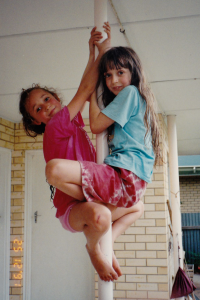 With Tens, once again we find a child happy to be near home: ‘Outgoing though he is in many ways, Ten does much of his playing in his own neighbourhood; in fact he seems to feel most at home close to home.’ For Tens are still fond of home and loyal to it. They still have a strong attachment to their parents. They compare them with other childrens’ parents, usually favourably, and still admire them (though this may be out of the earshot of their own parents!) This is not to say Ten will not express their observations and criticisms also—they may keep their comparative judgements about adults to themselves or they may express them freely – when they do, Gesell says they are candid portraits. They can accept with calm, parental edicts about behaviour with increasing consciousness and individuation. However at eleven this will change, so it is important to use this natural openness to parental influence while it is still possible.
With Tens, once again we find a child happy to be near home: ‘Outgoing though he is in many ways, Ten does much of his playing in his own neighbourhood; in fact he seems to feel most at home close to home.’ For Tens are still fond of home and loyal to it. They still have a strong attachment to their parents. They compare them with other childrens’ parents, usually favourably, and still admire them (though this may be out of the earshot of their own parents!) This is not to say Ten will not express their observations and criticisms also—they may keep their comparative judgements about adults to themselves or they may express them freely – when they do, Gesell says they are candid portraits. They can accept with calm, parental edicts about behaviour with increasing consciousness and individuation. However at eleven this will change, so it is important to use this natural openness to parental influence while it is still possible.
Similarly Tens may wish sometimes to be more independent of family. For example, a request to ‘go to the mall’ with their friends can be confronting for parents who may consider such excursions inappropriate and/or unsafe. Here it is helpful for parents to consider whether there is any way such an activity be can be supported in a safer, more limited way (such as the parent accompanying them there but leaving the children for a time by themselves) thus meeting the needs of both parents and children. As we saw at Nine, this is an opportunity to let the child practice moving into the world independently, but in small steps, learning about safety and responsibility on the way. Teaching them about appropriate people and places to turn to when worried or in trouble is now essential. Without this guidance now in moving out into the world, they will be at greater risk later when they are out of your sphere of authority altogether and may not be so open to your advice!
Peers
Tens’ need for friends is insatiable. Gesell describes this: ‘They want to bring one home from school every day, but most of all they like their neighbourhood pals.’ ‘They want the friend who is available at all times.’ Gesell’s descriptions of Ten’s interactions with friends is also revealing: ‘There is more ‘getting mad’ or ‘not playing’ among girls than boys, though the expression of this anger by ‘not speaking’ doesn’t last very long.
At ten children are becoming more aware of the individuality of themselves and others, and they love to describe their friends in concrete detail. Individual differences and talents also show themselves more clearly at this time.
This is still the time of the “gang” and their secret clubs with secret rules. Here is another Moon quality, their fondness for secrets. They share this quality with Nines (Saturn is a bit secretive too but with a different motivation – freedom, rather than relationship). Tens like the group solidarity feelings coming from group secrets. There is also much gossiping and exchange of notes (often in a cryptic form). It is not surprising that they also like mysteries, conspiracies, practical magic and hero worship in their literary preferences.
While secrets can intensify connections between people, they also have their dangers. Insisting on ‘secrets’ and ‘secret agreements’ is a tactic often used by perpetrators to try to hide sexual abuse. At nine and ten it is good to reinforce again the idea that there are “good” and “bad” secrets and “bad” secrets should not be kept secret if someone’s well-being is at risk. They need to learn that “safety” has a higher priority than “honour” here and it helps for children to have this affirmed by respected adults. This is part of teaching them how to keep themselves safe. This is important not only in helping prevent individual abuse but in the context of bullying which is on the rise at this age, as we shall see below.
Precocious behaviours or the need to belong?
Parents of children of this age are often concerned about what appears to be “precocious adolescent behaviour” in their Tens—interest in current adolescent fashion trends, music and the current idols, etc. This is particularly concerning for parents who have tried to protect their children and give them time to grow up naturally. However, for such children it may not be as bad as we fear. One needs to look carefully to see whether this apparent precocity is more an expression of group solidarity than a true “growing up too fast”; it may be more a need to appear “cool”, led by a few children. These can often be those with older siblings, who get kudos in the group by leading the way with more “sophisticated” interests. Children can be very astute in observing what needs to be done to be accepted and to be “cool” and may “comply” in whatever way they comfortably can, but without any real commitment to the things themselves. This may be by listening to the content of the latest television series being talked about on the school bus and later being able to talk about it in such a way that it seems as though they watched it, even if they didn’t.
Tens need to feel understood by us in this powerful need to belong, but they also need to be guided through it. This is a time to talk with your child and acknowledge that most human beings want to belong to a group, something true for all ages, but also to re-affirm that human beings also like and need to be ourselves, to be individuals. Tens are beginning to see for themselves that sometimes there are conflicts between belonging to a group and being true to ourselves. They may have already been challenged in their developing sense of right and wrong when they have witnessed ganging up, bullying behaviours at school. As adults we need to help them work through such ethical conflicts between group behaviour and individual moral responsibilities.
The use of mobile/cell phones may become an issue now with some Tens and parents need to do their own research on the health risks for children and consider their options here. Provision of a phone at particular times for personal safety needs to be considered as a separate issue from use of a mobile/cell phone for personal use and social chats. The effect of electro-magnetic energy emissions on brain growth is still unclear and adolescents still have a huge amount of brain growth to complete. This may be a good time to consider when a mobile phone is appropriate so that requests/pressures from the child can be countered with well thought- through reasons and a clear option for the future, “No, you get your own phone at age so-and-so… but you can use the home phone now.” Certainly whenever your child is given a phone in the coming years they need to be educated about its safe use and cyberbullying. For example it is recommended that parents encourage their children to limit their exposure by reducing call time, by making calls where reception is good, by using hands-free devices or speaker options, or by texting. Try government websites for base line information on this. More information on educating teenagers about mobile phones and technology can be found in the profile on Fourteens and in the article on Technology and your teenager.
Individual alone and as part of the group
Tens’ challenge is to be strong enough to be authentically themselves, not just what others would like them to be. This is harder in this Moon age of Ten than it was in the more strongly individual age of Nine. In addition to wanting to be part of the group, Tens are also less ambitious and ‘driven’ than Nines and they tend toward a more easy going, phlegmatic temperament. Tens natural feeling of being at one with others, helps them understand the needs of others when they are similar to their own but it may also take more effort for them to be more conscious and individual. Clearly we need to watch out for when Tens sublimate themselves inappropriately in favour of the group. How vulnerable they are to being dominated by others will be affected by their natural temperament, their self-confidence and resilience.
This is a time for adults to encourage Tens to do what hopefully they have already been encouraged to do at Nine, if not before— to be true to what they feel is right, to be true to themselves. This is a time of learning about the individual alone and the individual as part of the social group, and that in our society, both are important. We need to support them in doing this, though it might sometimes mean the harder road for the adult at the time because you may need to insist that sometimes they express what they want, rather than let them just go along with what you want. Adults can also reaffirm the value of individuality, by giving permission to be ‘different’, showing them that every family is different, doing things in different ways, with different values, and that this is what makes life rich and interesting. At the same time parents need to acknowledge and accept Tens’ intense needs for peer friendships.
An example of a place we can work with Tens to support the value for their individual selves is in their own bedroom. There we can encourage Ten to include a display of things that reflect their individuality, of who they are, as part of this family, in this place, with real friends, beloved pets and personal interests. Increasingly from this time on there may be pressure to eclipse such ‘individual expressions’ and replace them with the values and interest of the peer group – the current music, fashions and idols ( images from magazines often set unreachable ‘ideals’ and have been shown to lower self-esteem, especially in girls). The commercial world is out to capture this “Tween” market (seen as 8 –12 years) so don’t be shy in your efforts to bring a balance to their clever and aggressive marketing.
Let there be a limited place for such group idols on a notice board, (better yet put them in the cupboard) but don’t let them dominate the walls and the feeling of the whole room. Encourage the use of pictures where these pop stars/idols/heroes look like approachable, likeable people. Tens fantasize that they could be friends with these heroes, so let them look like friends not sneering enemies. But leave even more space in their room for showing things about who they are as individuals. This is about showing them how to find a healthy balance between group and individual interests. Get in now, while your child at Ten is still open to listening and at least attempting to please you and you can do it together. It is preparing the way for Eleven and coming adolescence when “togetherness” is harder to find.
Harassment and bullying
Harassment and bullying are also issues to be considered at this age. At ten, as we have seen, they are particularly vulnerable to group pressures and bullying, because of their propensity to please others and avoid conflict. Even at home, Ten’s greatest social difficulties are in relation to siblings who may tease them and try to get them to react! Tens’ reluctance to confront and preference to avoid conflict may actually aggravate the situation here, both with siblings who are looking for a tussle, and students involved in power struggles at school. It is perhaps not surprising that bullying appears to increase at this time at school, for increasing awareness about how others feel, opens the way to new ways of harassing others, especially by exclusion. This is seen particularly in girls who may be more psychologically astute and prefer smaller more intimate friendship groups; their emotional volatility, to ‘get mad’, or not speak, or not play at times can feed children looking for power. This leaves Tens more vulnerable to both bullying and to delinquent forms of behaviour in an adverse environment.
It is possible that those few girls at Ten who manipulate others psychologically (sometimes nastily), or those boys with power issues, who like to lead the pack and bully, are also spurred on by this reluctance to fight back in other Tens. Reluctance to fight without at the same time holding a strong centre, can make victims of children. It is a time when children need to be taught how not to be victims, working with their own inner confidence and firmness, how they stand, how they speak, how they meet others. See the article on bullying for more help on this.
It is worth also talking to Tens about the nature of bullies. Although class bullies often appear outwardly confident and may appear to have good self esteem, they are not healthy. No one who disrespects others can truly respect the highest, most moral, most important part of themselves. They need recognition for this part of themselves. Caring Tens can learn that recognition of the best part of the bully (not cowering to the worst part) can help that bullying child grow into their better selves. The capacity to lead others into doing good things for others is one such potential in a class bully. Here is an opportunity for your Tens to learn about how to use love, compassion and the power to help others, the wonderful qualities we see in Tens at their best.
In terms of how Tens respond when someone else is being bullied, their need to belong can conflict with their caring nature. Their own ethical inclinations would be not to tease but they are often too passive in resisting social pressure and may end up joining in. It is a time when the power and responsibility of the bystander should be taught to children and supported by the adults around them. The compassionate nature of Tens can bring personal understanding of the importance of helping victims of bullying in this way, although it may be harder for children of this age to actually assert themselves enough to do it. Raising their consciousness about the ethical issues can strengthen them here.
See also Preventing Harassment: Preparing firm ground and Victims and bullies in ourselves
Moral development
Morally, Tens are still concrete in their growing conscience and have quite a strict ethical sense, with a fairly critical sense of justice. They are more aware of what is wrong than what is right. They oppose cheating, with stern codes against dishonesty (or swearing or drinking etc.). They still defer to mother/father in solving ethical problems, but have questions on right and wrong. They are still more open to compromises than many parents realise. They have a growing interest in social justice and social welfare. They still have a strong tendency to alibi and shift blame, but are truthful about big things, less so about small things. In the most part, and within reason, however they are trustworthy. We can also appeal to reason in Tens.
Thinking and School
Where Nines pondered more deeply, Tens are content to stay more on the surface of things. Tens tend to show that Moon quality of being a bit dreamy and not all that conscious about their emotional state or thoughts; the Gesell researchers record that Ten may say ‘he doesn’t know, can’t say, has never thought about it’ or ‘well it depends…’ Even in their vision, in eye development, Tens ‘do not want to penetrate deeply or define sharply.’ It is ‘no wonder that, in their thinking, Tens appear to memorize better than to achieve keen insights.’ They ‘don’t want to reach out into new lands.’ Tens ‘move through a quicker, sharper, more superficial world of thought rather than that of deeper feelings.’
It is not surprising then that Tens’ thinking is broad and factual, rather than investigative, or that they like facts and figures, and to use their memory. They also like the pictorial, which is concrete for them. They like intellectual tasks which already have an order to them, rather than having to organise tasks themselves. They are rather more conventional than creative.
In school we can see a lot of these characteristics, in their love of the challenge of oral arithmetic, the facts of geography, knowing the states and capitals, rivers, mountains. They love dictation and and the challenge of memorising. When adults worry about Tens’ short attention span and lack of depth, after seeing the opposite in Nines, Gesell researchers advise us to be patient:
Ideally, since they enjoy it so much, more time might be spent on memorizing and less on penetration in thinking. Ten has difficulty in combining or connecting two facts and prefers to take them simply as they are. His catalogue of memorized material will stand him in good stead later, for penetration will come.
At school, Tens want a teacher to be fair, tolerant, informative (with facts of course) and have a sense of humour, and for themselves they want to talk, look, read, listen and move more than ‘work’.
This latter reluctance to ‘work’, reflects something of Tens’ will. The strong will, perfectionism and perseverance of Nine has dissipated! Even though Gesell researchers observe that Ten is a ‘person of action rather than thought’, still they also say that Ten is ‘not a good worker’ with their efforts having an ‘inevitable petering out’. ‘Tens can dabble at many tasks…but have no sense of continuation.’ ‘Ten likes to complete a task but doesn’t wish to enlarge or elaborate upon it, preferring to cover the whole terrain with little rootlets. This is no time for deep growing. This is the time for expanding, for experiencing. Boy or girl wishes to try everything.’ Here again we find breadth not depth, in the thinking, the feeling and the willing.
Gender differences and sexual development
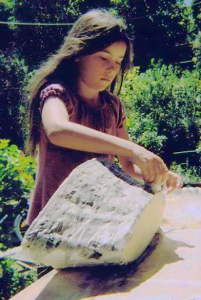 Although hormones are changing in some girls of ten, the boys hormonal changes occur up to a year later and this keeps the class as a whole still relatively innocent. As we saw at Nine, boys and girls still tend to keep apart in play by choice – many don’t like each other “yet”- even at Ten. Boys often express their camaraderie with wrestling, shoving and punching. Girls walk arm in arm. Girls are more aware of and discerning in interpersonal relationships and may, if they are still able to play, continue to explore family structures in their play with dolls.
Although hormones are changing in some girls of ten, the boys hormonal changes occur up to a year later and this keeps the class as a whole still relatively innocent. As we saw at Nine, boys and girls still tend to keep apart in play by choice – many don’t like each other “yet”- even at Ten. Boys often express their camaraderie with wrestling, shoving and punching. Girls walk arm in arm. Girls are more aware of and discerning in interpersonal relationships and may, if they are still able to play, continue to explore family structures in their play with dolls.
They continue to show more awareness of the reproductive aspects of sex. As with Nines it is helpful for parents and teachers to speak only positively and appreciatively about gender differences and to ban all gender insults, as they hopefully ban all other put-downs in their family or classrooms. It is another aspect of teaching respect for differences, one that can be broadened to include respect for differences in race, culture, religious belief, and so on.
This is not an age very open to sex education because, there is still so much ‘repugnance’ felt towards human sexual activity. Give them another year and this gender and sex information resistance softens, and healthy, if shy, curiosity takes its place. That is the developmental readiness which can be watched for underneath other behaviours, even in the increasing numbers with the beginnings of breast development and those very few with more advanced sexual maturation. More can be found in the Eleven profile in the section on Sexuality and sex education readiness.
Children by this age should be told about menarche and spermarche (first menstruation in girls, first ejaculation in boys) and about changes in the breast tissue to be expected in both boys and girls. More can be found on this in the Eleven profile in the section on Physical Growth. This should be introduced with deep respect for these processes and the emphasis on the need for boys and girls to be very respectful and sensitive about these processes in the other gender. The need for this information is different from what they will need a little later about sexual intercourse. The two sorts of information do not need to be given together. Some children at Ten will already have been exposed to pornography which is providing many children with sexual information. Age appropriate information on sex education is provided in the profiles on the ages that follow Ten, and on pornography in the profile on Fifteens. If your child is particularly early in sexual maturation you may want to read ahead.
Tens also need to be reminded again about guidelines to prevent sexual abuse (protective behaviours/personal protection). Books and talks on YouTube by Freda Briggs are recommended here. Tens’ more compliant temperament makes them more vulnerable in this. Parents are responsible to make sure that Tens can say “No” strongly and loudly to any inappropriate touch of private parts (including the mouth). Schools today try to support this, but it is best when it comes from parents as well, since 85% of abuse occurs with people the child knows and it is the parents who are there much of the time. Note the most recent statistics on this show 1 in 3 children have been sexually abused, with abuse of boys equal to or greater than that of girls, and this needs to be taken seriously. See Prevention of sexual abuse of young children for more information.
So life with Ten, with their sunny, easy going Moon qualities, can be a joy. They can encourage us to live in the present moment with a generosity of spirit. They need most support from adults in learning how to manage their need to belong and the pressures this brings on being able to express their independence and their own uniqueness. At eleven, they begin to explore more strongly and explosively the nature of the individual’s rights in the social group.
View/download as pdf Ten
Further reading
Bates Ames, Louise, Ilg, Frances L., & Baker, Sidney M. Your Ten-to-Fourteen-Year Old (A Dell Trade Paperback New York 1988)
Payne, Kim John, with Lisa M. Ross Simplicity Parenting Using the Extraordinary Power of Less to Raise Calmer, Happier and More Secure kids (Ballantine Books Trade Paperbacks, New York, 2009) Or view their website www.simplicityparenting.com
Briggs, Freda and McVeity, Michael Teaching children to protect themselves (Allen and Unwin 2000)
See also
Avoiding trouble with sevens to tens
Sibling rivalry
Preventing harassment: Preparing firm ground
Developing sexuality and the prevention of sexual abuse in young children
Strategies for healthy living in the family
Building self esteem and resilience
